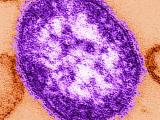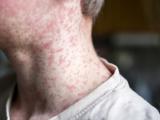Feb 13, 2013
More Salmonella from ground beef
Two more infections, both in Wisconsin, of Salmonella Typhimurium from ground beef have been added to an outbreak that was first reported by the Centers for Disease Control and Prevention (CDC) on Jan 25. Cases now total 18, with 1 in Arizona, 1 in Iowa, 2 in Illinois, 9 in Michigan, and 5 in Wisconsin. Among 14 patients for whom information is available, half were hospitalized; there have been no deaths. Patient ages range from 2 to 87 years, with a median of 47. Seven patients reported eating at the same restaurant before they became ill. The restaurant served raw beef acquired from Jouni Meats, Inc, and Gab Halal Foods, both of which issued recalls of ground beef products in late January. The CDC warns consumers, as before, to not eat raw or undercooked ground beef and dispose of or return recalled beef, emphasizing that this is especially important for children, older adults, and people with weakened immune systems.
Feb 13 CDC outbreak update
Jan 28 CIDRAP News story on the outbreak
Produce group asks for extension on food safety rules comment period
United Fresh, an association of produce companies, said this week it has asked for an extension of the comment period on two proposed food safety rules that are part of the 2011 Food Safety Modernization Act. United Fresh submitted a request to the Office of Management and Budget (OMB) to extend the comment period beyond Feb 15 on certain provisions in the proposed produce and preventive-control rules, the association said in a Feb 11 news release. The group is in the midst of an "exhaustive review process" on the rules with its members, David Gombas, PhD, United's senior vice president of food safety and technology, said in the release. The association has held calls and webinars as part of the process and will hold working-group meetings in conjunction with Food and Drug Administration (FDA) hearings this month and next in Washington, DC, Chicago, and Portland, Ore. "The request is consistent with the time needed to properly respond, especially given that three additional proposed rules, on Foreign Supplier Verification, Preventive Controls for Animal Feed, and Accredited Third-Party Certification, are scheduled to be released in the near future and will also impact the industry," Gombas said in the release.
Feb 11 United Fresh news release
Feb 12 CIDRAP News scan on FDA meetings
Google Flu Trends badly overestimated flu activity this season
Google Flu Trends, which estimates flu rates on the basis of flu-related Web searches, "drastically overestimated" peak flu levels this season compared with traditional surveillance methods, Nature News reported today. Google Flu Trends, launched in 2008 with hopes of providing easier, faster estimates of flu prevalence, uses data-mining records of flu-related search terms in Google combined with computer modeling to arrive at estimates of influenza-like illness (ILI). It was developed through research by Google and the CDC and often has had results remarkably similar to as well as faster than CDC surveillance data—but not this year. Its estimate for the national peak of flu around Christmas was nearly double the CDC's estimate, and there was even more discrepancy with some state data. In the 2009 influenza pandemic, Google Flu Trends badly underestimated the frequency of ILI, the story adds. A number of factors, such as media attention to flu spurring Web searches, could play a role, and Harvard epidemiologist John Brownstein said, "You need to be constantly adapting these models." New flu-tracking techniques based on mining Web data and monitoring social media "will complement, but not substitute for, traditional epidemiological surveillance networks," the story concluded.
Feb 13 Nature News story
MMR vaccination coverage poor in certain European populations
Recognized hard-to-reach populations in Europe have a disproportionate risk of sustaining measles and rubella because of undervaccination with the measles-mumps-rubella (MMR) vaccine and need to be understood and reached if measles-elimination goals are to be met, according to a new technical report commissioned by the European Centre for Disease Control (ECDC). The report discusses activities being undertaken to monitor and improve MMR vaccination coverage in response to a goal of the World Health Organization Regional Office for Europe (WHO EURO) to eliminate endemic measles and rubella by 2015. To achieve this goal, a very high vaccination rate (>95%) will be needed, says the report. The Vaccine European New Integrated Collaboration Effort (VENICE) Consortium, who produced the report, found that undervaccinated groups include migrants and nomadic groups, immigrants, religious groups, anthroposophic (20th century religious system) groups, complementary medicine users, and healthcare workers. While direct information on vaccination coverage among these populations is sparse, many measles and rubella outbreaks occurred among them. Among the barriers to vaccination in the groups are discrimination, administrative or financial problems, language or literacy difficulties, lack of cultural knowledge or access to health information, and religious beliefs. The authors say that addressing the problem of undervaccination is the responsibility of every European nation.
Feb 12 ECDC press release
Full ECDC report


















